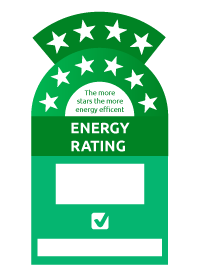Air Conditioners & Energy Efficient Ways to Keep Cool
Air conditioning usage has risen dramatically in the last 20 years, with over 74% of Australians across the country using aircon to cool their homes during the Australian summers. While aircon might not be necessary for everyone, depending on where you live within the country, aircon might be the difference between a bearable and unbearable summer. But, how do you choose and install the right air conditioning unit? What features should you look for when choosing an air conditioner for your home? Learn more about air conditioning in Australia by reading below, to help you make an informed decision that is best for your wallet and comfort.
Types of air conditioners
There are so many different types of air conditioning units, each that come with benefits and costs. Depending on your lifestyle and housing situation, one type of air conditioning unit might be better suited for you, over another. For example, if you live in a small apartment, a window air conditioner might be the most efficient and cost-effective option. However, if you have a large home, a central air conditioning system might be a better choice.
Split and multi-split systems
Split and multi-split systems are two (or more) part air conditioner systems with an indoor and outdoor unit connected by pipes filled with refrigerant gas. Split aircon systems are generally quieter and more attractive than window-mounted models, but don’t require the duct work of centralized A/C. Split aircon systems can be used in one room, or connected throughout multiple rooms with one outdoor unit.
| Pros | Cons |
|---|---|
|
|
Installing and using an air conditioning unit can put a pretty big dent in your wallet. Prices will vary depending on the size of your unit, its energy efficiency, and how often you use it, and by choosing a more economic model, spending some time looking for a good installation quote, and only using your aircon when you need it while utilizing energy saving tips and tricks, you can reduce the overall cost of your unit.
- Cost of a split-system unit
- Upfront cost: $600 - $5500+ depending on the size and efficiency of your aircon unit
- Installation cost: $60 - $100+ per hour for installation
- Running cost: Running costs depend on a variety of factors including the size of the unit, how long the air is running, and how cold the air is set to. Smaller units running at 4 hours per day at 24 degrees, can cost between $40 and $50 per year while large units running for five hours a day can cost over an additional $150 per year on your energy bills.
Compare energy plans designed to handle the extra cooling load and save money. More Energy Options
Wall or window air conditioning units
Wall or window air conditioning systems are single unit aircon systems installed in a window or through an external wall. Window or wall units tend to work best for smaller rooms, up to 50m sq, such as a home office or bedroom and can be a good choice for renters, as smaller window-mounted units can be moved with relative ease. However, as it’s all one unit, window or wall mounted air conditioners can be more noisy than a split-unit model.
| Pros | Cons |
|---|---|
|
|
While window or wall mounted air conditioning units tend to have a lower upfront cost than other types of air conditioners, they can also be less efficient and lead to hundreds of additional dollars being spent per year on energy bills.
- Cost of a window or wall-mounted unit
- Upfront cost: $200 - $500+
- Installation cost: Up to $1,000+. While smaller window units can be installed by yourself (though they are deceptively heavy and are usually a two-person job), larger units that require a wall vent or additional wiring can cost a lot more
- Running cost: Between $40 up to $200+ per month, depending on the size of the AC unit and how often it’s running.
Ducted air conditioning systems
Ducted air conditioning systems are full-house systems, designed to cool (and heat) your entire home. They can be very effective, but come at a significantly higher cost and are much more permanent than other aircon units. If you own your own home and want to keep every room cool during the summer and warm during the winter however, it can be a good investment.
| Pros | Cons |
|---|---|
|
|
As stated, ducted air conditioning systems are the most expensive in terms of up-front costs, installation, and running costs. The price of a ducted air conditioning system really depends on the size of your home and how energy efficient the system is.
- Cost of a ducted AC system
- Upfront cost + installation: Ducted air conditioning in a small home or apartment can start at $5,000 upfront, while large multi-story houses can cost upwards of $30,000 upfront. The average four-bed home can cost around $15,000.
- Running cost: $250 to $500 per year
Portable air conditioning units
Portable air conditioners are exactly what they sound like; a non-permanent solution to cooling your home. Portable AC units can be moved (though often not easily) between rooms in a house, and can be good for people who live in a home where split-unit air conditioning or another more permanent option isn’t feasible (such as renters). Portable AC units have flexible air ducts that attach to the window to send heat outside, but can take up precious floor space and aren’t as quiet or energy efficient as other air conditioning systems.
| Pros | Cons |
|---|---|
|
|
Portable air conditioners come at a much lower start up cost than other types of AC units, and don’t require a technician to install it. As a result, you can expect to spend between $150 and $300 for a new portable air conditioner. While they are less efficient than split-systems, or even a window or wall mounted unit, running costs for a portable unit can be between $20 and $40 a month, depending on the energy efficiency of your model.
Noise pollutionAir conditioners can be very noisy, and disrupt your own life or your neighbors. Check with local council noise restrictions before installing any AC unit to make sure you won’t be violating any rules, especially if any outdoor units will be close to neighbors.
Need Energy Advice ?
Selectra's Energy Experts are Available To Help You Free of Charge
(Free Selectra Service - Currently open)
Reverse-cycle air conditioning
Reverse-cycle air conditioners not only cool your home, but heat it as well in a single unit and can be one of the cheapest methods of heating your home in the winter. This feature is available in most types of air conditioning units, such a split-unit or ducted, and can be useful for those who live where summer is very hot but winter can get very cold.
Reverse-cycle systems cool the air by extracting the heat from indoors and moving it outside through the refrigerant gas pipes. To heat your room or home, the process is simply reversed with the unit extracting warm air from outside and sending it indoors.
Units that have both heating and cooling through reverse-cycle air conditioning are generally more expensive than cooling-only air conditioners so if you don’t need to warm your home as well, it might be better to choose a cooling-only unit as most other features are usually the same. However, with the Victorian government offering rebates, upgrading to a reverse-cycle system could be a smart and cost-effective investment.
Energy efficiency star rating system

Air conditioners are star-rated for energy efficiency (EER) which was standardized by the Bureau of Energy Efficiency (BEE). The rating system goes from one to ten stars, with six stars and under being a low energy rating (tier 1), while seven or more stars indicate a high energy efficiency rating (tier 2).
While a lower energy efficient model might be cheaper to purchase outright, they will often cost more in the long run as they will use more energy to cool your home. Choosing an AC unit with a higher energy star rating, and implementing energy saving techniques in your home, will help keep your energy bills low while still keeping cool during the summer.
Choosing the right air conditioner size
It’s important to know the size of the room you want to cool, when picking out your new air conditioner. Choosing an air conditioner with too high a capacity for the room can result in the room being too cold or too hot, inadequate dehumidification, more wear and tear on your AC leading to more frequent replacements, and increased energy usage and costs. However, choosing a model that is too low of a capacity can lead to your AC running at maximum output, over-drying the air and adding additional wear and tear to the machine.
| Room size | Capacity | Recommended unit type |
|---|---|---|
| Up to 20 m2 | 2–2.5kW | Portable Small split system Window-mounted |
| 20–40 m2 | 2.5–5kW | Window mounted Split system |
| 40–60 m2 | 5–7kW | Split system |
| 60–80 m2 | 6–8kW | Split system Ducted system |
| 80+ m2 | 7–9kW | Split system Ducted system |
When choosing an air conditioning size and model, it’s best to choose an air conditioner at equal or slightly higher capacity than the room requires (about 0.5kW more than required) as that extra capacity might help with extremely hot temperatures.
It’s not just room size you need to consider for the type of air conditioner you need. There are many other factors that can influence your decision.
- Type of room: Is it an open plan? Living room? Bedroom?
- Window and glass door position and size: Large windows facing the north or west will let in more heat during the summer than smaller, south or eastern-facing windows
- Insulation of room, curtains, and shade
When should I buy a new air conditioner?
No one wants to be stuck waiting for a new AC unit during the hottest months of the year, or paying a premium during the start of the season. It’s best to avoid purchasing a new unit during the summer, as technicians are often very busy and prices might be more expensive.
It’s best to shop around for a new unit, if possible, just after the summer as old models will often be discounted and installers less busy. Not to mention, once summertime comes around again, you’ll already be ready and prepared for the hottest of weather.
Need Energy Advice ?
Selectra's Energy Experts are Available to Help You Free of Charge
(Free Selectra Service - Currently open)
Ways to save on your air conditioning costs
Adding an air conditioner to your home will increase your energy bills, however by implementing some energy-saving techniques, you’ll be less likely to spend an extra couple hundred dollars per year keeping your house cool. Here you can find some of the methods for reducing your air conditioning expenses.
| Upgrade your old windows | Old windows are very inefficient, and upgrading them to new double or triple-glazed models can save you lots of money in the long run. Replacing your windows does involve an upfront cost, but you’ll save more on your energy bills. |
| Weatherize your home | Seal the leaks and gaps in windows in doors. Caulk the leaks or cracks around windows, and start adding draught stoppers around the bottom edge of doors. This will help keep cold air inside, and keep the hot summer air outside. |
| Utilize fans | Ceiling fans help to circulate cold air, pushing the hot air down and the cool air up, allowing for a more evenly cooled room |
| Replace the air conditioner filters | Old and dirty filters can prevent the cold air from circulating, leading to your AC unit working harder and less efficiently. Air conditioner filters are cheap, so replacing them every couple of months won’t cost you that much and help reduce your energy bills. |
| Insulate | Professional insulation is one of the best ways to increase energy efficiency, especially if you have an older home. The upfront cost might be a bit high, but the amount you’ll save will make up for it. If you can’t stomach the price of hiring someone to professionally insulate your home, you can start by adding insulating curtains to your windows, and sealing any leaks or draughts. |
Frequently Asked Questions - Air Conditioning in Australia
What types of air conditioning units are available?
There are various types including:
- Split and Multi-Split Systems: Quiet, multiple indoor units connected to one outdoor compressor, suitable for cooling multiple rooms.
- Wall or Window Units: Single units installed in windows or walls, suitable for small rooms; generally noisier and less efficient.
- Ducted Systems: Whole-house systems for cooling and heating, requiring professional installation and higher upfront cost.
- Portable Units: Mobile, non-permanent units that vent through windows; less efficient and noisier.
What are the costs associated with air conditioners?
Costs vary by type and size:
- Split system: $600–$5500+ upfront; $60–$100+/hour installation; $40–$150+ running costs yearly.
- Wall/Window: $200–$500+ upfront; installation up to $1000+; monthly running cost $40–$200+.
- Ducted: $5,000–$30,000 upfront including installation; $250–$500 yearly running costs.
- Portable: $150–$300; no installation; $20–$40 monthly running cost.
What is reverse-cycle air conditioning?
Reverse-cycle air conditioners provide heating and cooling by reversing the refrigeration cycle. They’re cost-effective for both summer and winter and are common in split and ducted systems.
How does the energy star rating affect my choice?
Air conditioners rated 7 stars and above are highly efficient, reducing running costs despite higher purchase prices. Lower-rated units may cost less upfront but consume more energy over time.
When is the best time to buy an air conditioner?
Buying just after summer can save money and reduce wait times as installers are less busy and models may be discounted. Avoid the peak summer months for purchase.
How can I save on air conditioning costs?
- Upgrade to double or triple glazed windows
- Seal drafts around doors and windows
- Use ceiling fans to circulate air
- Replace dirty air filters regularly
- Install insulation or insulating curtains
Are air conditioners noisy?
Some units can be noisy, especially window and portable models. Check local noise regulations and place outdoor units thoughtfully to minimize disturbance.
Click below to find a better deal for your home!


